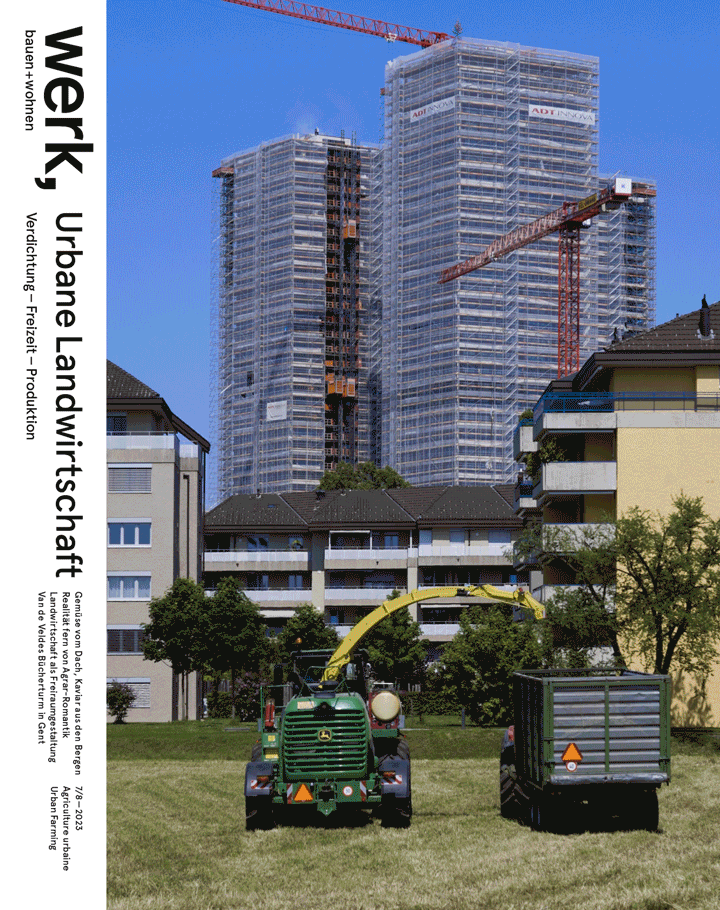werk, bauen + wohnen 7/8 – 2023

No More Sacred Cows
In urban regions agriculture must battle with all kinds of conflicting goals: on the one hand people like to use outdoor areas close to the city for recreation (buzz term: 15-minute city) and this gets in the way of production. Farmers look on sternly when people plough through their meadows, as happened in several places during the Corona pandemic. On the other hand, the development of building activity inwards
and on the edges of the settled area is displacing much valuable land once used for the production of fruit and vegetables close to the city.
In addition: in Switzerland the high subventions for agriculture indicate its high social status. But what kind of food supply can we expect in an urban context? As sustainability and densi-fication become increasingly important, where is agriculture heading?
Recently, agriculture has also been used as a design tool in planning projects. Bottom-up movements such as urban gardening are used top-down: Outside Geneva, an agriculture park with a farm will operate in the future. In Bernex — and here landscape architecture’s view of urban agriculture can be briefly summarized — the social moment is in the foreground, rather than efficient production. But the latter is in focus when new areas for agriculture are being sought. Why fly in herbs from far away, if they can be grown at a large scale, without soil, on a nearby unused roof?
Especially in industrial areas, using roofs in this way is a clever idea, as a cute example from Flanders shows. As a prototype of the Flanders government a greenhouse was placed on the roof of a dull old industrial shed. This hybridization of industrial use is forward-looking in several senses. If we want to avoid flying our vegetables around the world so much, we will have to find more local areas for cultivation. And: agriculture in the industrial zone is not subject to the rules and regulations of agriculture in the open field, this sacred cow in Switzerland, but operates on the free market. — Jenny Keller, Roland Züger